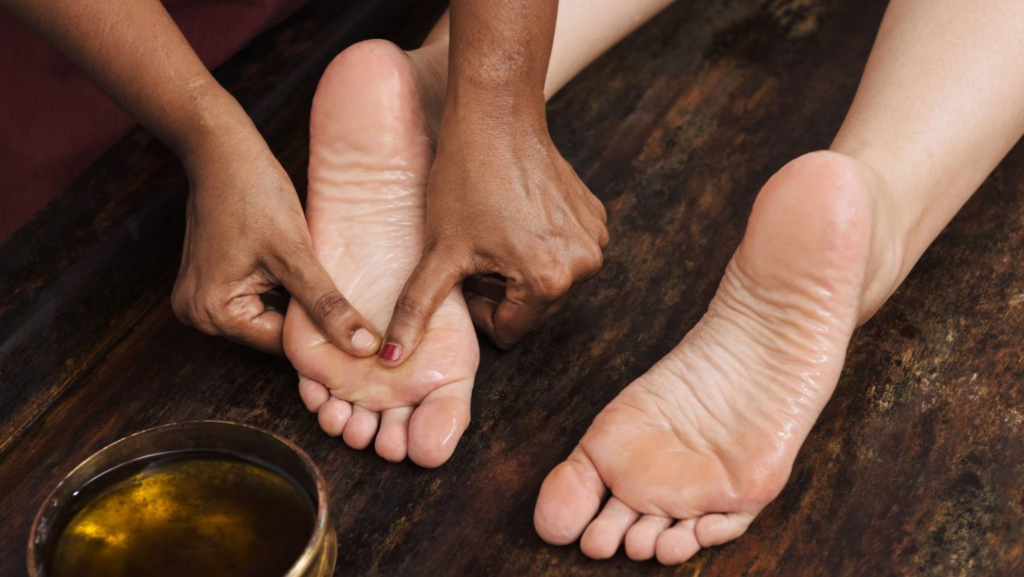
Ayurvedic massage is a therapeutic practice rooted in ancient Indian medicine that promotes holistic well-being by balancing the body, mind, and spirit. This comprehensive guide explores the top Ayurvedic massage techniques renowned for their ability to induce deep relaxation, reduce stress, and enhance overall vitality. Whether you’re new to Ayurveda or seeking to deepen your understanding, these techniques offer a pathway to rejuvenation and inner peace.
Understanding Ayurvedic Massage
Ayurvedic massage is based on the principles of Ayurveda, which views health as a balance between the three doshas (Vata, Pitta, and Kapha) and emphasizes the importance of maintaining this balance for overall well-being. The massage techniques are designed to stimulate the body’s natural healing abilities, improve circulation, detoxify tissues, and promote relaxation.
Top Ayurvedic Massage Techniques
Abhyanga: Full-Body Oil Massage
Description: Abhyanga is a traditional Ayurvedic massage that involves the application of warm herbal oils infused with medicinal herbs.
Benefits: Promotes relaxation, improves circulation, nourishes the skin, enhances detoxification, and balances the doshas.
Technique: Using rhythmic strokes, the practitioner massages the entire body from head to toe, focusing on marma points (energy centers) to release tension and restore energy flow.
Shirodhara: Forehead Oil Pouring
Description: Shirodhara involves a continuous stream of warm herbal oil poured over the forehead (Ajna chakra), inducing profound relaxation and mental clarity.
Benefits: Calms the nervous system, reduces stress and anxiety, enhances cognitive function, and promotes restful sleep.
Technique: The client lies comfortably on a massage table as the therapist adjusts the temperature and flow rate of the oil, allowing it to flow rhythmically over the forehead.
Pizhichil: Oil Bath Massage
Description: Pizhichil combines massage with the pouring of warm medicated oil over the body in a continuous stream.
Benefits: Nourishes the skin, strengthens muscles and joints, improves circulation, enhances relaxation, and balances Vata dosha.
Technique: Two therapists work in tandem to pour warm herbal oil over the client’s body while massaging gently with synchronized movements.
Udvartana: Herbal Powder Massage
Description: Udvartana involves a dry massage using herbal powders that exfoliate the skin and stimulate lymphatic drainage.
Benefits: Reduces cellulite, improves skin texture, enhances circulation, detoxifies the body, and balances Kapha dosha.
Technique: The practitioner massages the body with herbal powders in upward strokes, followed by a warm shower to remove excess powder and reveal revitalized skin.
Marma Point Massage
Description: Marma points are vital energy centers located throughout the body, similar to acupuncture points in Chinese medicine.
Benefits: Balances prana (life force energy), relieves tension, improves energy flow, and supports overall well-being.
Technique: The therapist applies gentle pressure or massage to specific marma points using oils or herbal preparations, promoting balance and vitality.
Incorporating Ayurvedic Massage for Deep Relaxation
Consultation with an Ayurvedic Practitioner
Before undergoing Ayurvedic massage, consult with a qualified Ayurvedic practitioner to determine your dosha constitution and any specific health concerns. They can recommend the most suitable massage technique for your needs.
Choosing the Right Technique
Select an Ayurvedic massage technique based on your wellness goals, dosha constitution, and desired therapeutic benefits. Each technique offers unique advantages for promoting relaxation, detoxification, and overall rejuvenation.
Creating a Relaxing Environment
Prepare a tranquil space for your massage session with soft lighting, calming music, and comfortable temperature to enhance relaxation and sensory experience.
Post-Massage Care
After your massage, allow time to rest and absorb the therapeutic benefits. Hydrate well, avoid heavy meals, and practice self-care rituals to prolong the effects of relaxation and rejuvenation.
Conclusion
Ayurvedic massage techniques are not just about physical manipulation but are deeply rooted in promoting holistic well-being and restoring balance to the body, mind, and spirit. Whether you choose Abhyanga for its nourishing properties, Shirodhara for stress reduction, or Pizhichil for muscle relaxation, each technique offers a pathway to deep relaxation and rejuvenation. By incorporating Ayurvedic massage into your wellness routine, you can experience profound benefits that enhance vitality, reduce stress, and support overall health. Embrace the wisdom of Ayurveda and discover the transformative power of these ancient massage techniques for your journey to inner peace and well-being.



